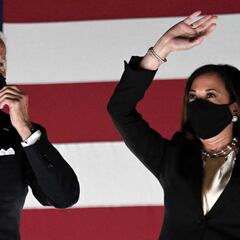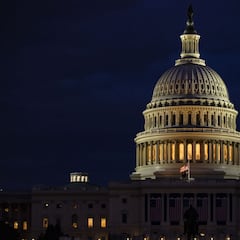What's the current minimum wage and what is Biden’s proposal?
Joe Biden presented his American Rescue Plan which calls for increasing the federal minimum wage to $15 per hour looks set to encounter early opposition.

Joe Biden presented a sweeping $1.9 trillion coronavirus stimulus proposal, the American Rescue Plan to tackle the economic and health crisis brought on by the covid-19 pandemic. In his plan he calls for boosting the minimum wage so that workers across the country can live a middle-class life.
Although his plan does not lay out how he would go about implementing such a raise for American workers, several previous attempts and current policies enacted around the country could point the way to what any future legislation would look like.
Why does Biden want to change the minimum wage?
Currently the US federal minimum wage is 7.25 per hour, meaning that a person earning this wage who worked 40 per week every week of the year, would bring home $15,080 annually. That is less than half the US median annual average and slightly above the US poverty threshold at $13,064. The current minimum wage has not changed since July 2009.
In 2019 there were 1.6 million workers who earned wages at or below the federal minimum and they made up 1.9 percent of all hourly paid workers according to the US Bureau of Labor Statistics. States can set minimum wage laws that are lower than the federal law, but workers must be paid the higher of the two when subject to both.
“Hard working Americans deserve sufficient wages to put food on the table and keep a roof over their heads, without having to keep multiple jobs. But millions of working families are struggling to get by.”
American Rescue Plan
Biden’s plan would call for lifting the federal minimum to $15 per hour but exactly how fast has not been laid out. Previous proposals and minimum wage increases put into place around the country generally make the increases incremental over a period of time. The House passed bill in 2019 that would have gradually increased the minimum wage until it reached $15 in 2025 but it died in the Senate where Senate Majority Leader Mitch McConnell never brought it to the floor.
According to the Economic Policy Institute gradually raising the minimum wage to $15 by 2024 would directly lift the wages of 28.1 million workers. The average directly affected worker who works all year would receive a $3,900 increase in annual wage income, equal to a raise of 20.9 percent.
I’ll work with President-elect Biden to strengthen and pass this package immediately. But let’s be clear: if the Republicans want to drag their feet while working families struggle, the Democratic majority should use every legislative tool available to pass it.
— Elizabeth Warren (@SenWarren) January 15, 2021
Will Biden be able to raise the minimum wage?
Raising the minimum wage has been a winner whether it is in Republican-leaning or Democrat-leaning states. From 1996 to 2020, there were 27 minimum wage increase measures on the ballot across the US. Of the 27 measures, 25 were approved and 2 were defeated, with approval averaging 60 percent according to Ballotpedia. Florida was the most recent voting in the November elections to increase the state’s minimum wage to $15 by 2026.
Related stories
Some Republican lawmakers are opposed to raising the minimum wage arguing it would hinder, rather than help, the recovery. Biden wants to pass his American Rescue Plan with bipartisan support, which means he will need at least 10 of them to avoid a filibuster. Unlike other parts of his proposal raising the minimum wage does not have direct budgetary effects, ruling out the use of “reconciliation” to pass the wage increase with a simple majority.
It will have to be seen if Biden will be able to work across the aisle and how much energy he will dedicate to raising the minimum wage with all the other pending legislation and policies he wants to implement.


